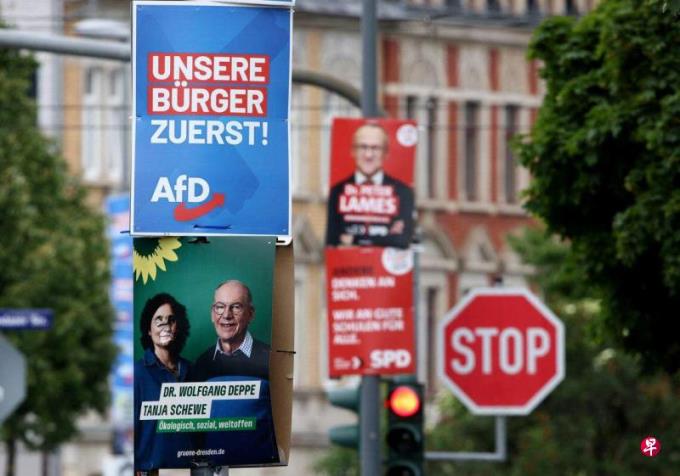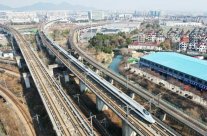
Dresden is a major town in eastern Germany and borders the capital of the Czech Republic and Poland.In history, Dreson is a high -tech industry center in Germany's optical, watches, cameras. Now, although it is benefited from Prime Minister Tsutz's "Eastern Development" strategy and is deployed as "Silicon Valley in Germany", the economic level is still in the economic levelNot as good as western cities; because of the differences in long -term development, it has become the base camp of the "alternative party" in Germany's extreme right. In 2019, it entered the "Nazi emergency state".
On May 3rd, Matthias Ecke, a European Parliament of the Political and Democratic Party, was severely injured by four extremists while posting a poster on the street.One of the murderers acknowledged that the "German Democratic Party", which was more right than the other party, made Dreson a melancholy shadow of "new Nazis".
In addition to the Social Democratic Party candidate, the Green Party election staff who also supports refugees and immigrants into Germany are also beaten.Both of the two incidents represent the German right forces from the influence to the martial arts. Not only are Dresden, the political atmosphere of Germany has an extreme tendency.On May 4th, the other party was beaten and throwing eggs when the alternative party was conducted in the state of Saxon; Dresden was just a microcosm of Germany's right right and the opposition between the two wings.
Why is Dresden melancholy?
Dresden has long been the capital of the Kingdom of Saxon, and Saxon has been one of the seven elections in the middle of the ancient times, and is a strong kingdom in Germany.Dresden also became a world -renowned porcelain production center during this period. It was not until Germany unified in 1871 that it was merged into the German Second Empire.At that time, the territory of the German Empire was far worse than today. The most east to the Kalinrad, which is called Konisburg, the old Germany.Dresden is in the middle of the German territory. In the south, the Austro -Hungarian Empire is the surrounding area. It is surrounded by developed industrial areas. The southeast is the West Ricia (most of which belongs to Poland), one of the world ’s industrial centers at that time.Therefore, Dresden was an important industrial and cultural center in Germany from the Second Empire to Wima Republic, and then to the third empire.
But before and after the end of World War II, Dresden's status was worse than before.During World War II, the famous "Dresden Bombing", which was famous for the history of the war, was bombed by a carpet -like to the body without complexion. It was one of the most destructive German cities during World War II.During East Germany, although Dresden was still a major industrial town, many well -known companies fled to West Germany.During World War II, the optical giant Zeiss Enterprise moved the main scientific researchers and production machinery to Stuttgart in the U.S. occupation zone under the coercion of General Patton.In addition, Dresden Bank also moved to Frankfurt; to this day, Dresden Bank's headquarters is still located in Frankfurt.
After the unity of the two virtues, with the strong support of the country, the Zeiss companies of the two virtues merged and set the scientific research department in Dresden.It has planned to set up factories in Dresden, with per capita GDP (GDP) reaching 3,100 euros (about S $ 45,574).Although Dresden is second only to Berlin in eastern Germany, it is still far behind Hanover, Frankfurt and other cities that have met in the former West Germany.
After a long time after the unification of the two Germans, East Germany, including Saxon, including Dresden, is still very withered.According to the population statistics of the German government, the Dreson population reached its peak in 1988 before the reunification, with 520,000, which fell year by year after unification. In 1998, it fell to the minimum value of only 450,000 people, a reduction of nearly 10%of the population.It was not until 2012 to the level of 1988.In the area where population shrinks, the economy is increasing. Dresden is the economic leader in eastern Germany. This is still the case.
The downturn's economic environment and the continuous loss of the population have filled Dresden's melancholy atmosphere, and in recent years, it has become a hotbed of new Nazi and extremely right thoughts.At the end of last year, the first place of the first local mayor won by the other party was in Pilner, Saxon, which belongs to Dresden.As mentioned above, in 2019, the Dresden City Council announced that the city has entered the "Nazi emergency state", which states that "holding anti -democracy, anti -diversified, anti -society, and extreme right extreme thoughts, includingViolence is increasing frequency (Dresden).The City Council pointed out that Dresden is the base camp of the right forces such as "European Patriots against the Western Islamic Movement" and "German National Democratic Party".Essence
This time the Democratic Party of the Society is the Youth League member of the German Democratic Party (renamed "Die Heimat last year).The German Democratic Party has been tried to prohibit participation in elections by the German government many times in the past.
Dresden's extremely right -right trend and violence acts from the differences between the two virtues after the unity.The people of Dedong generally believe that they are second -class citizens, and unity is actually "West Germany and East Germany."During the tenure of Donalz, the problem of insufficient development in the eastern region has been increased in the economic development of the eastern part. Unfortunately, the results have not been seen, and the violence and conflict have risen.
The author is a Hong Kong media in Germany



